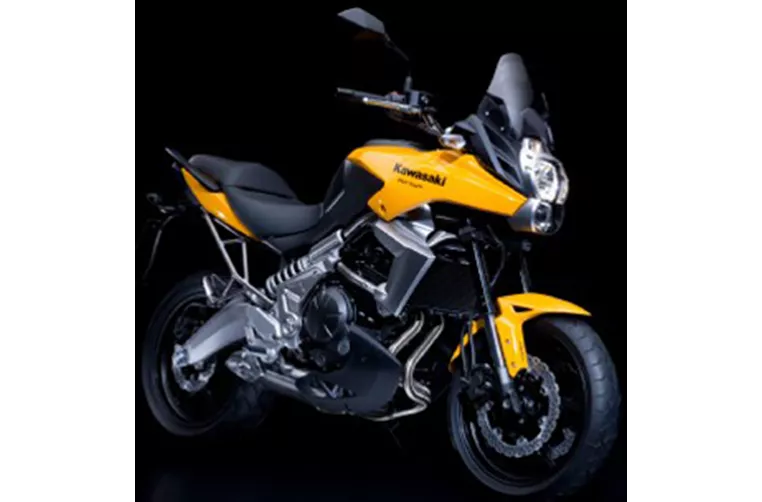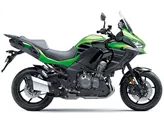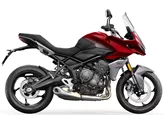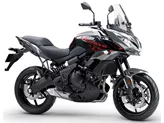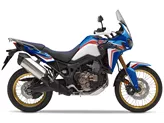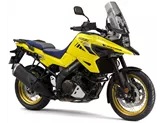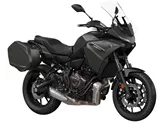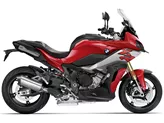Kawasaki Versys 650 2010 vs. Kawasaki Versys 1000 2015

Kawasaki Versys 650 2010

Kawasaki Versys 1000 2015
Overview - Kawasaki Versys 650 2010 vs Kawasaki Versys 1000 2015
The Kawasaki Versys 650 model year 2010 and the Kawasaki Versys 1000 model year 2015 are both enduro motorcycles with similar engine types and transmission systems. However, there are several key differences between the two models.
In terms of engine specifications, the Versys 650 has an in-line 2-cylinder engine with a displacement of 649cc, while the Versys 1000 has an in-line 4-cylinder engine with a displacement of 1043cc. This results in a significant difference in power output, with the Versys 650 producing 64 horsepower and 61 Nm of torque, compared to the Versys 1000's 120 horsepower and 102 Nm of torque. The Versys 1000's engine is also more refined and powerful, offering a sportier riding experience.
The suspension systems on both models are similar, with upside-down telescopic forks at the front. However, the Versys 1000 offers more adjustability options, including compression, preload, and rebound adjustments, compared to just rebound adjustment on the Versys 650. This allows for a more customizable and comfortable ride on the Versys 1000.

Kawasaki Versys 650 2010
In terms of chassis, the Versys 650 has a steel frame, while the Versys 1000 features an aluminum frame. The aluminum frame on the Versys 1000 offers better stability and handling, making it more suitable for sporty riding.
Both models have double disc brakes at the front, providing strong and reliable stopping power. The rear tire width is also wider on the Versys 1000, measuring 180mm compared to the Versys 650's 160mm. This results in improved traction and stability on the Versys 1000.
In terms of dimensions and weights, the Versys 1000 has a longer wheelbase of 1520mm compared to the Versys 650's 1415mm. This contributes to better stability and handling on the Versys 1000. The seat height is slightly lower on the Versys 1000, measuring 840mm compared to the Versys 650's 845mm. Both models have a fuel tank capacity of 19 liters and 21 liters respectively.

Kawasaki Versys 1000 2015
In terms of strengths, the Versys 650 is praised for its everyday usability and low fuel consumption. On the other hand, the Versys 1000 is praised for its sporty look, comfortable seating position, powerful engine, adjustable windshield, stable chassis, well-controlled braking system, clever range of accessories, and comparatively low price.
As for weaknesses, the Versys 650 is criticized for its lower performance compared to the Versys 1000. The Versys 1000, on the other hand, has minor drawbacks such as the windshield being only adjustable when stationary and the gear indicator being an optional extra.
In conclusion, the Kawasaki Versys 650 2010 and the Kawasaki Versys 1000 2015 are both capable enduro motorcycles, but the Versys 1000 offers a more powerful and refined riding experience with additional features and adjustability options.
Technical Specifications Kawasaki Versys 650 2010 compared to Kawasaki Versys 1000 2015
Pros and Cons in comparison
Pros and Cons in comparison
Kawasaki Versys 650 2010
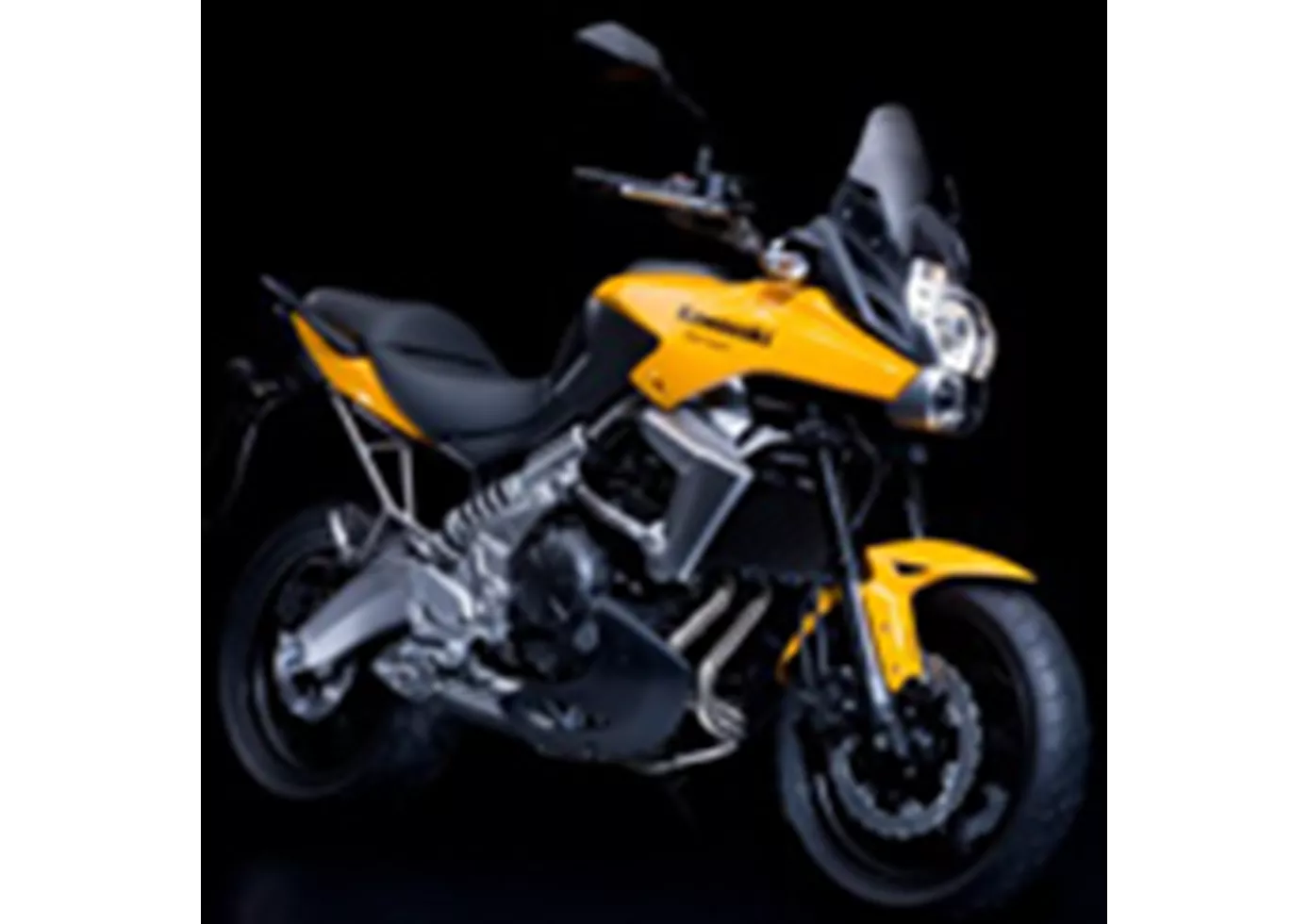
With a full tank of only 211 kg, it is particularly easy to handle in the mountains. All in all, it is at home almost anywhere, an everyday bike with that certain kick. With a new headlight and modernised design, the Versys is back on the attack.
Kawasaki Versys 1000 2015

The new Kawasaki Versys 1000 is not a completely new model - even if it looks like one from the design point of view. The look has been cleverly adapted to the current aggressive Kawasaki line with two pointed headlights and many edges at the front. Technically, on the other hand, it has been cautiously upgraded - but quite sensibly. Two additional horsepower boost the output to 120 hp, which is excellent to ride thanks to the wonderful in-line four-cylinder characteristics. The chassis corresponds to the sporty demands of a Kawasaki, but the ergonomics and comfortable seating position allow for long journeys - just like a big enduro. With useful accessories such as a pannier set, top case, heated grips and additional headlights, the Versys 1000 becomes a serious long-distance tourer - the comparatively low base price makes these gimmicks quite affordable.
Price Comparison Avarage Market Price Kawasaki Versys 650 vs Kawasaki Versys 1000
There are a few key differences between a Kawasaki Versys 650 2010 and a Kawasaki Versys 1000 2015. It takes less time to sell a Kawasaki Versys 650 with 61 days compared to 86 days for a Kawasaki Versys 1000. Since model year 2007 1000PS.de editors have written 39 reviews for the Kawasaki Versys 650 and 19 reviews for the Kawasaki Versys 1000 since model year 2012. The first review for the Kawasaki Versys 650 was published on 25/07/2006 and now has more than 3,900 views. This compares to more than 8,400 views for the first review on Kawasaki Versys 1000 published on 07/11/2011.
